Filters: Collection: "ir_uspace"
| Creator | Title | Description | Subject | Date | ||
|---|---|---|---|---|---|---|
| 26 |
 |
Hawkes, Kristen | Hadza scavenging: implications for Plio/Pleistocene Hominid subsistence | The frequent association of stone tools and large animal bones in African Plio/Pleistocene archaeological sites has long been taken as evidence of the importance of hunting in early hominid diets. Many now argue that it reflects hominid scavenging, not hunting. | Hadza; Scavenging; Plio/Pleistocene; Hominid Diet | 1988-04 |
| 27 |
 |
Adler, Robert W. | Changing the Law-Science Paradigm for Colorado River Restoration | Legal mandates and scientific realities conflict when existing legal principles do not match the realities and limits of current science. Those conflicts can be addressed if scientists communicate the limits of existing scientific capabilities and if the legal system responds accordingly | 2008 | |
| 28 |
 |
Farmer, Colleen G. | Parental care: the key to understanding endothermy and other convergent features in birds and mammals | Birds and mammals share a number of features that are remarkably similar but that have evolved independently. One of these characters, endothermy, has been suggested to have played a cardinal role in avian and mammalian evolution. I hypothesize that it is parental care, rather than endothermy, that ... | Evolution; Metabolism; Convergence | 2000 |
| 29 |
 |
Davidson, Diane W. | Dispersal adaptations of some acacia species in the Australian arid zone | Most Australian representatives of the genus Acacia have diaspores with arillate appendages indicative of adaptation for active dispersal by animals. Based on physical and chemical characteristics of these arils and mechanisms of diaspore presentation, a number of arid zone acacias can be distingu... | Acacia; Australian arid zone; Dispersal ecology; Fruit quality; Myrmecochory; Ornithochory; Seed parasitoids; Soil nutrients | 1984 |
| 30 |
 |
Clayton, Dale H. | Molecular phylogeny of the dove genus Zenaida: mitochondrial and nuclear DNA sequences | We reconstructed a phylogeny for the seven species of doves in the genus Zenaida on the basis of a combined analysis of mitochondria (ND2 and cytochrome b) and nuclear (fibrinogen intron 7) DNA sequences. This phylogeny, which is completely resolved, is well supported with all nodes showing greater... | Molecular phylogeny; Dove; Nuclear DNA | 2000 |
| 31 |
 |
Coley, Phyllis D. | What's up? Perspectives from the first international forest canopy conference at Sarasota, Florida, 1994 | Jumars, caribineers, pole pruners, tree bicycles, Bosun's chairs, booms, peconhas . . . these terms are not listed in most biological dictionaries. Nor are construction cranes or large treehouses or hot-air dirigibles listed as priority equipment for any scientific laboratories. But these are th... | 1995 | |
| 32 |
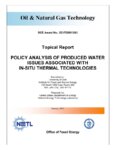 |
Keiter, Robert; Ruple, John; Tanana, Heather | Policty Analysis of Produced Water Issues Associated with In-Situ Thermal Technologies | ABSTRACT Commercial scale oil shale and oil sands development will require water, the amount of which will depend on the technologies adopted and the scale of development that occurs. Water in oil shale and oil sands country is already in scarce supply, and because of the arid nature of the regi... | 2011-01 | |
| 33 |
 |
Ehleringer, James R.; Cerling, Thure E.; Dearing, Maria-Denise | Experimental study of carbon-isotope fractionation between diet, hair, and feces of mammalian herbivores | The carbon-isotope composition of hair and feces offers a glimpse into the diets of mammalian herbivores. It is particularly useful for determining the relative consumption of browse and graze in tropical environments, as these foods have strongly divergent carbon-isotope compositions. Fecal ?13C v... | Fractionation; Mammalian herbivores; Medicago sativa; Cynodon dactylon | 2003 |
| 34 |
 |
Farmer, Colleen G. | The provenance of alveolar and parabronchial lungs: insights from paleoecology and the discovery of cardiogenic, unidirectional airflow in the American alligator (Alligator mississippiensis) | Birds and mammals evolved greater aerobic abilities than their common ancestor had. This required expansion of the cardiopulmonary system's capacity for gas exchange, but while directional selection for his expanded capacity resulted in extremely similar avian and mammalian hearts, strikingly differ... | 2010-07 | |
| 35 |
 |
Venkatasubramanian, Suresh | Sensor network localization for moving sensors | Sensor network localization (SNL) is the problem of determining the locations of the sensors given sparse and usually noisy inter-communication distances among them. In this work we propose an iterative algorithm named PLACEMENT to solve the SNL problem. This iterative algorithm requires an initial ... | 2012-01-01 | |
| 36 |
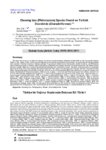 |
Sekercioglu, Cagan | Chewing lice (Phthiraptera) species found on Turkish shorebirds (Charadriiformes) | Approximately 4.500 species of lice have been so far described, with about 4.000 species seen on birds and with 3.000 species in the suborder Ischnocera 1. There are 465 bird species so far recorded in Turkey and the actual total is likely to exceed 500 species. However, the chewing lice fauna of th... | 2010-01-01 | |
| 37 |
 |
O'Rourke, Dennis H. | Introduction: origins and settlement of the indigenous populations of the Aleutian Archipelago | The series of papers in this special issue of Human Biology use an interdisciplinary approach to address regional questions and to integrate disparate Aleutian data into a broad, synthetic effort. The contributors leverage decades of data on Aleut origins, biogeography, and behavior through integrat... | 2010 | |
| 38 |
 |
Ehleringer, James R.; Bush, Sarah Elizabeth | Ecophysiology of riparian cottonwood and willow before, during, and after two years of soil water removal | Riparian cottonwood/willow forest assemblages are highly valued in the southwestern United States for their wildlife habitat, biodiversity, and watershed protection. Yet these forests are under considerable threat from climate change impacts on water resources and land-use activities to support hum... | Riparian cottonwood; Riparian willow; Soil water removal; Coyote willow; Drought recovery; Populus fremontii; Riparian ecology; Red Butte Canyon Research Natural Area; Salix exigua; Stem sap flux; Leaf carbon isotope ratios | 2010 |
| 39 |
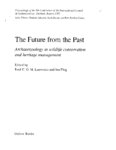 |
Broughton, John | Pristine benchmarks and indigenous conservation? Implications from California zooarchaeology | The superabundance of tame wildlife during the early historic period in California astonished European explorers. And the historic accounts of incredible animal densities, most notably artiodactyls, have influenced a long-held perception that California Indians lived in harmony with nature. However,... | 2004-01-01 | |
| 40 |
 |
Broughton, John | Resource intensification and late Holocene human impacts on Pacific coast bird populations: evidence from the Emeryville shellmound avifauna | Anthropologists and conservation biologists have commonly assumed that the distributions and abundances of vertebrate resources recorded during the early historic period in North America reflected a "pristine" condition. This view follows from the perception that Native American population densities... | Resource intensification; Holocene human impacts; Foraging efficiency; Harvest pressure; Bird populations; Emeryville shellmound | 2001 |
| 41 |
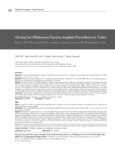 |
Sekercioglu, Cagan | Chewing lice (phthiraptera) found on songbirds (Passeriformes) in Turkey | Objective: This study was performed to detect chewing lice species found on the songbirds at Lake Kuyucuk bird ringing station in the Kars province located in eastern Turkey. Methods: Chewing lice were collected from songbirds captured between September and October 2009. Fifty-one birds belonging t... | 2011-01-01 | |
| 42 |
 |
Clayton, Dale H. | Darwins finches combat introduced nest parasites with fumigated cotton | Introduced parasites are a threat to biodiversity when naïve hosts lack effective defenses against such parasites [1]. Several parasites have recently colonized the Galápagos Islands, threatening native bird populations [2]. For example, the introduced parasitic nest fly Philornis downsi (Diptera:... | 2014-01-01 | |
| 43 |
 |
Potts, Wayne K. | Fall migration of Golden Eagles in the Wellsville Mountains, Northern Utah, 1976-1979 | Migratory movements of Golden Eagles were investigated in detail as part of a 4-year autumn raptor migration study atop an 8,600-foot ridge in the Wellsville Mountains. In 856 observation hours (161 days) between 6 August and 28 November, 898 Golden Eagles (10% of the oral raptor flight) were counte... | Wellsville Mountains; Golden eagles; Fall migration | 1984 |
| 44 |
 |
Clayton, Dale H. | Molecular phylogeny of the dove genera Streptopelia and Columba | Evolutionary history of the dove genus Streptopelia has not been examined with rigorous phylogenetic methods. We present a study of phylogenetic relationships of Streptopelia based on over 3,600 base pairs of nuclear and mitochondrial gene sequences. | Doves; Streptopelia; Columba | 2001 |
| 45 |
 |
Cashdan, Elizabeth A. | Competition between foragers and food producers on the Botletli River, Botswana | The immigration of food-producing groups into areas occupied by hunters and gatherers must have been a common occurrence in prehistory. How were the hunter-gatherers affected by this? I describe here two groups of Kalahari Basarwa ('Bushmen'), one living along the flood plain of the lower Botletli ... | Kalahari Basarwa; Bushmen; Foraging; Cattle | 1986 |
| 46 |
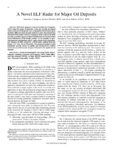 |
Simpson, Jamesina J. | A novel ELF radar for major oil deposits | This letter proposes a novel extremely low frequency (ELF) radar for major oil deposits. Using our recently developed whole-Earth electromagnetic wave propagation model based upon the finite-difference time-domain method, we have determined that detection of the radial (vertical) component of the sc... | 2006-01-01 | |
| 47 |
 |
Freire, Juliana; Silva, Claudio T. | Scientific exploration in the era of ocean observatories | Society's critical and urgent need to better understand the world's oceans is amply documented and has led to a unique convergence of operational and scientific interests in the US, organized around the concept of ocean observatories: cyber-facilitated integrations of observations, simulations, a... | Ocean observatories; Provenance | 2008-05 |
| 48 |
 |
Sekercioglu, Cagan | Importance of Ethiopian shade coffee farms for forest bird conservation | Coffee is the most important tropical commodity and is grown in high-priority areas for biological conservation. There is abundant literature on the conservation value of coffee farms internationally, but there has been little research on this topic in Africa. Ethiopia is a diverse and little-studie... | 2014-01-01 | |
| 49 |
 |
Steenburgh, William James | Climate change and Utah: the scientific consenus | This report, entitled \"Climate Change and Utah: The Scientific Consensus\" was prepared for Utah Governor Jon Huntsman Jr. under the direction of his Blue Ribbon Advisory Council on Climate Change (BRAC). It summarizes current (2007) scientific understanding of climate change and its potential imp... | Climate, Climate Change, Utah | 2007-09 |
| 50 |
 |
Ehleringer, James R. ; Cerling, Thure E. | Aberrant water homeostasis detected by stable isotope analysis | While isotopes are frequently used as tracers in investigations of disease physiology (i.e., 14C labeled glucose), few studies have examined the impact that disease, and disease-related alterations in metabolism, may have on stable isotope ratios at natural abundance levels. The isotopic composition... | 2010-07-21 |
